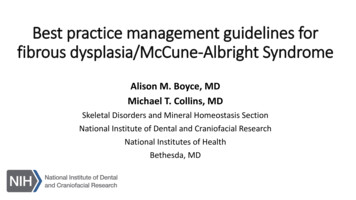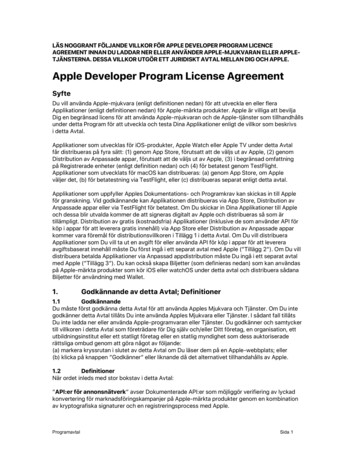
Transcription
Best practice management guidelines forfibrous dysplasia/McCune-Albright SyndromeAlison M. Boyce, MDMichael T. Collins, MDSkeletal Disorders and Mineral Homeostasis SectionNational Institute of Dental and Craniofacial ResearchNational Institutes of HealthBethesda, MD
3023-019-1102-9
Why did Researchers create these guidelines? FD/MAS is a very complex disease and challenging for clinicians No 2 patients are alike Many different specialties involved, who approach problems from differentperspectives This has led to huge discrepancies in the types of care patients arereceiving
How did Researchers create them? Consensus statement created by 51 FD/MAS clinical experts from 13countries in the USA, Europe and Asia Core Guideline Development Group formed at the first FD/MASInternational Consortium meeting in Oxford, UK, 2015 Draft document circulated to the wider group. Comments werereviewed, & items with 70% consensus were included in the guidelines Patient representatives independently developed a separate patientchecklist to help patients & doctors use the guidelines
What changes do the guidelines represent inFD/MAS care? They define disease terms! McCune-Albright syndrome: the combination of FD and one or moreextraskeletal features, OR 2 or more extraskeletal features Extraskeletal features:1. Café-au-lait skin macules with characteristic features2. Recurrent ovarian cysts in girls and women OR testicular lesions in boys and men3. Thyroid lesions with or without hyperthyroidism4. Growth hormone excess5. Neonatal hypercortisolism6. Intramuscular myxomas
What changes do the guidelines represent inFD/MAS care? They outline the full diagnostic workup that most patients need They inform doctors in making management decisions The guidelines do NOT: Dictate care for every patient Dictate surgical approaches Replace the need for doctors to think about patients individually
Management of Pain inFibrous Dysplasia
Precocious puberty management in girlsBone age advanced 2 years,frequent bleeding, and/orpsychological distressBone age advancement 2 years,infrequent bleeding, andno psychological distressTreatmentMonitoring- Letrozole 2.5 mg daily- If ineffective--add or replacewith tamoxifen, fulvestrant- Monitor for and treat centralpubertyMonitoringBone age, growthvelocity, H&P every6 months
How can patients and clinicians make use of theguidelines? Patients: Recommend it to your doctors Consider bringing a physical copy and/or sending them an electronic link tothe full guideline document Bring a physical copy of the Patient Checklist to your visit and discuss it withyour doctor Physicians in the FD/MAS community: share them with colleaguesand consulting clinicians Share on social media
Thank you! 10.1186/s13023-019-1102-9
Best practice management guidelines for fibrous dysplasia/McCune -Albright Syndrome Alison M. Boyce, MD. Michael T. Collins, MD. Skeletal Disorders and Mineral Homeostasis Section. National Institute of Dental and Craniofacial Research. National Institutes of Health. Bethesda, MD











